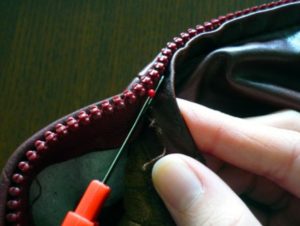The shelves of craft stores are overflowing with supplies. But unfortunately, with all the variety of choices, it is not always possible to buy the necessary part. This happens when searching for the right zipper. The size may meet the criteria, but the color does not. Or, on the contrary, you are satisfied with the color, but the required length of the fastener is much shorter than what is commercially available. How can we shorten it to the required size without compromising functionality? Read on.
The nuances of shortening detachable and permanent zippers at the top
You can only decrease the one-piece zipper at the bottom. If you have to work with a detachable one, then you can cut it only at the top. Since the design of the stopper consists of a socket into which a pin is inserted, it is almost impossible to restore them after cutting. From above, changing the length of one and the other variety is quite possible and will not be difficult even for a child.
What is needed for the job?
There are four types of one-piece locks - secret, with metal teeth, plastic spiral and tractor teeth. We will tell you about the most popular and accessible methods of shortening zippers in the upper segment. For this process we will need:
 the fastener itself;
the fastener itself;- pen or felt-tip pen;
- tape measure;
- soldering iron or nail;
- threads with a needle;
- scissors;
- knife or scalpel;
- screwdriver;
- side cutters or nail clippers;
- pliers or round nose pliers.
Step-by-step process for shortening from above
There are several shortening methods, you just have to choose the one you need.
Method 1
 In order for the clasp to retain its original appearance, we must carefully remove the stopper from its upper straps. It is usually made of a tooth-like plastic that can be removed with a knife. Of course, everything must be done carefully so that the item does not subsequently lose its functionality due to intensive use and washing. We insert the knife into the slot between the plastic part and the fabric. With light pressure we push apart and remove the braid from it.
In order for the clasp to retain its original appearance, we must carefully remove the stopper from its upper straps. It is usually made of a tooth-like plastic that can be removed with a knife. Of course, everything must be done carefully so that the item does not subsequently lose its functionality due to intensive use and washing. We insert the knife into the slot between the plastic part and the fabric. With light pressure we push apart and remove the braid from it.
After trimming the unnecessary fragment and removing unnecessary parts, the limiter can be fixed with super glue. If it was not possible to remove parts of the limiter without losing its appearance, you can make an imitation of them from the removed links. One of them is clamped between two located at the end of the braid, pre-lubricated with glue. In some cases, they are melted with a soldering iron or a nail heated with a lighter, clamped with pliers. The ends are smoothed using a file.
Method 2
 If the limiters are made of metal in the form of a bracket with sharp spikes or without them, then a screwdriver will come to our aid, with which it is quite easy to move its ends apart.
If the limiters are made of metal in the form of a bracket with sharp spikes or without them, then a screwdriver will come to our aid, with which it is quite easy to move its ends apart.
Once the stops have been successfully removed, the excess length is cut off after careful measurement. Because It will no longer be possible to restore the deleted fragment. Therefore, we need a stock on which the teeth are removed and staples are installed. And this is at least 2–3 centimeters. It is at this interval that we remove the extra links with pliers. Then the limiters are installed above the topmost one.
Method 3
He is the most basic of all. Here, the role of a plug is played by ordinary threads that match the color of the braid or fabric from which the product is sewn. They are overlapped over the last links in several stitches. Most often, such manipulation is performed with hidden zippers.
Features of working with lightning-tractor
 Removing the teeth of a tractor zipper is a little more difficult than metal ones, because they are attached by soldering directly to the edge of the tape. As a result, they are removed by biting off the upper part with side cutters, and the remains are gradually crushed on both sides. This is done slowly, since the plastic parts are quite durable. It is enough to free an area of 1.5-2 cm from them. And you can fix a homemade limiter as described in the first method.
Removing the teeth of a tractor zipper is a little more difficult than metal ones, because they are attached by soldering directly to the edge of the tape. As a result, they are removed by biting off the upper part with side cutters, and the remains are gradually crushed on both sides. This is done slowly, since the plastic parts are quite durable. It is enough to free an area of 1.5-2 cm from them. And you can fix a homemade limiter as described in the first method.
In conclusion, I would like to say that very practical to save old, broken zippers. Because the limiters installed on them are quite suitable for any lock, regardless of the mechanism and material used. You can also buy these parts at a store that sells fabrics and accessories.



 0
0





